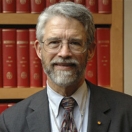
On March 9, 2009, President Obama issued a Presidential Memorandum on Scientific Integrity emphasizing the importance of science in guiding Administration decisions and the importance of ensuring that the public trusts the science behind those decisions. In it he highlighted six principles of scientific integrity that would be at the core of this Administration’s approach to policy making. And he asked me, in collaboration with other Federal officials, to craft recommendations for ensuring scientific integrity throughout the executive branch.
Today, in response to the President’s request, I am issuing a Memorandum to the Heads of Departments and Agencies that provides further guidance to Executive Branch leaders as they implement Administration policies on scientific integrity. The new memorandum describes the minimum standards expected as departments and agencies craft scientific integrity rules appropriate for their particular missions and cultures, including a clear prohibition on political interference in scientific processes and expanded assurances of transparency. It requires that department and agency heads report to me on their progress toward completing those rules within 120 days.
It’s important to recognize that, although this Memorandum is new, scientific integrity has been a White House priority since Day One of this Administration. That fact is exemplified by the dozens of extraordinarily high-caliber and internationally renowned scientists that the President has brought into his Administration, including three Nobel prize winners in science in full-time positions (Steven Chu, Harold Varmus, and Carl Wieman) and two more as members of the President’s Council of Advisors on Science and Technology (Mario Molina and Ahmed Zewail); by the policies the Administration has adopted, including the President’s Executive Order removing barriers to responsible research involving stem cells; by the budgets it has proposed, as reflected by the largest investment in science and innovation in our Nation’s history; and by the processes it has followed to apply science to some of our most challenging problems, including evidence-based decision-making in energy, agriculture, climate, resource management, and national security.
Science and technology have extraordinary potential to help America achieve a broad range of national goals, including sparking economic growth and job creation; allowing Americans to live longer, healthier lives; developing clean sources of energy that reduce our dependence on foreign oil; and protecting our environment. As the President said at the annual meeting of the National Academy of Sciences last year, “Science is more essential for our prosperity, our security, our health, our environment, and our quality of life than it has ever been before.”
I am confident that today’s Memorandum will help ensure that science and technology continue to be brought to bear by this Administration with the greatest effectiveness and integrity in the service of all of the national goals the President has so clearly articulated.
John P. Holdren is Assistant to the President for Science and Technology and Director of the Office of Science and Technology Policy


